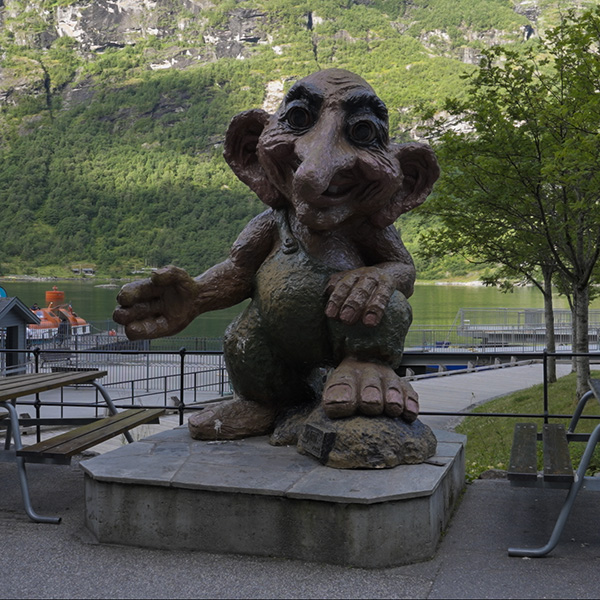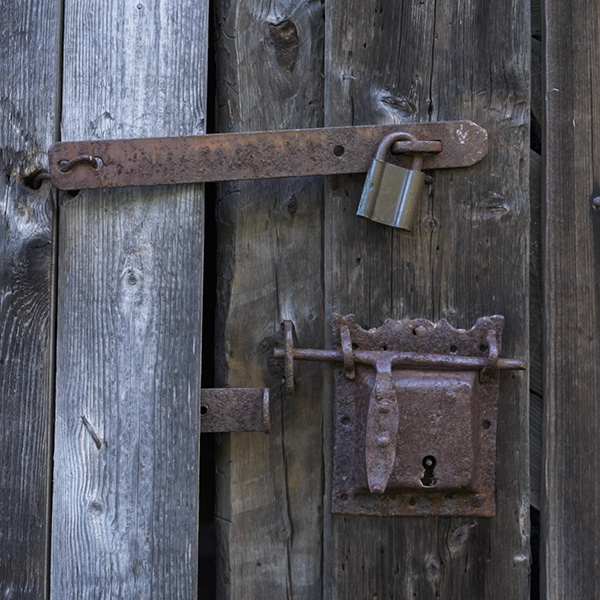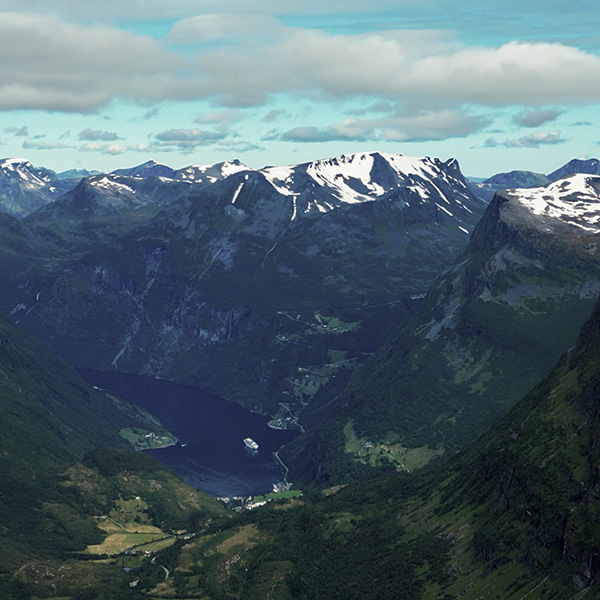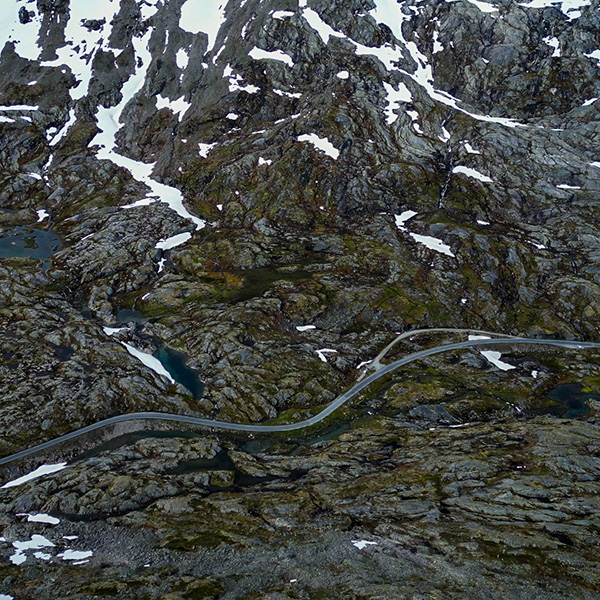Tucked away in western Norway, Geiranger is one of the country’s most iconic destinations – and for good reason. This small village lies at the head of the Geirangerfjord, a UNESCO World Heritage Site known for its jaw-dropping natural beauty. Towering cliffs, snow-dusted peaks, deep-blue waters, and cascading waterfalls form a dramatic landscape that draws photographers, hikers, and cruise passengers from around the world. But beyond the fjord itself, the surrounding mountain roads offer equally unforgettable views – and that’s exactly what we set out to explore on our excursion to Dalsnibba, Flydalsjuvet, and the Eagle Bend (Ørnesvingen).
The Eagle Bend – Serpentine Views over the Fjord
Our journey began with a scenic drive along the Geirangerfjord, heading toward Ørnesvingen, better known as the Eagle Bend. This viewpoint sits at around 600 meters above sea level and is reached via a winding road with 11 tight switchbacks – a true feat of Norwegian road engineering. As we ascended, every curve revealed a new panorama, until we reached the top: an awe-inspiring lookout over the fjord, where our cruise ship sat quietly far below. It’s a moment that captures the scale and majesty of this landscape better than any postcard ever could.
Through Geiranger Valley – Past Waterfalls and History
From there, we made our way back through Geiranger, passing the octagonal church from 1842, a quaint wooden building that reflects the simplicity and resilience of mountain life. Just outside the village, we stopped at the Storfoss waterfall, the largest in the Geiranger Valley – a thundering cascade of glacial water that crashes through the green hillsides. The lush valley is dotted with abandoned farms clinging to steep slopes, a silent reminder of a tougher past.
Flydalsjuvet – Iconic Cliffside Views
Next, we reached Flydalsjuvet, one of Geiranger’s most famous photo spots. From this cliffside viewpoint, you get a sweeping perspective of the entire village, the cruise ships in the harbor, and the fjord stretching into the distance. This is one of the most photographed places in Norway – and standing there, it’s easy to see why. The view is nothing short of majestic, a perfect blend of rugged terrain and tranquil water.
Summit Ascent – Dalsnibba Skywalk
The highlight of the excursion came as we climbed even higher, toward Mount Dalsnibba, rising to 1,495 meters above sea level. If snow conditions allow, the drive up offers a stark and beautiful contrast: icy peaks, scattered snowfields, and sweeping views that stretch to the distant fjords and glaciers. From the Geiranger Skywalk at Dalsnibba, you can literally look down upon the fjord from above the clouds. It’s an unforgettable moment – to stand atop a mountain, breathe in the crisp alpine air, and feel like you’re on the edge of the world.
The Norwegian Fjord Centre – History Meets Nature
On our descent, we made one final stop at the Norwegian Fjord Centre. This interactive museum dives deep into the cultural and natural heritage of the Geiranger region. Through multimedia exhibitions and historical artifacts, we learned about life on remote mountain farms, the engineering behind Norway’s steep roads, and the natural forces – snow avalanches, landslides, floods – that have shaped this landscape. It added a deeper layer to everything we had seen along the way.
Practical Travel Tips for Geiranger Visitors
Budget Accommodation:
While Geiranger is small and seasonal, there are a few affordable options if you book early. Try:
- Lunheim Accommodations – simple rooms with spectacular views
- Vinje Camping – offers cabins and tent spots close to the village
- Geirangerfjorden Feriesenter – affordable self-catering units
Budget Eats:
Dining out in Norway can be expensive, but some local spots offer good value:
- Café Ole – cozy café with sandwiches, cakes, and great coffee
- Naustkroa – offers pizza, burgers, and simple dishes at fair prices
- Joker supermarket – ideal for picking up snacks or groceries for a picnic
Getting Around:
The village is walkable, but to explore viewpoints like Dalsnibba or Flydalsjuvet, consider:
- Guided excursions from cruise ships
- Local bus tours (like the Geiranger Skywalk Tour)
- Car rental for more flexibility
Best Time to Visit:
Late May to early September is ideal, with long daylight hours and open mountain roads. Weather can change quickly – dress in layers and always carry a rain jacket.
Final Thought
Geiranger isn’t just about the fjord – it’s about perspective. From sea level to mountaintop, every viewpoint tells a different story. This excursion gave us a deeper appreciation of the dramatic contrasts that make this region so unforgettable.





